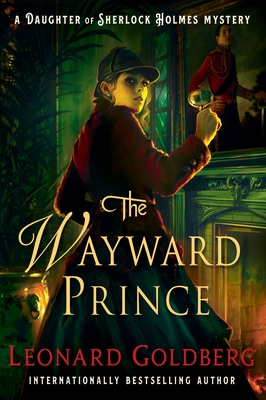 The Wayward Prince (The Daughter of Sherlock Holmes Mysteries, #7) by Leonard Goldberg
The Wayward Prince (The Daughter of Sherlock Holmes Mysteries, #7) by Leonard Goldberg Format: eARC
Source: supplied by publisher via Edelweiss
Formats available: hardcover, ebook, audiobook
Genres: historical fiction, historical mystery
Series: Daughter of Sherlock Holmes #7
Pages: 336
Published by Minotaur Books on July 11, 2023
Purchasing Info: Author's Website, Publisher's Website, Amazon, Barnes & Noble, Kobo, Bookshop.org
Goodreads
The fate of Prince Harry and the British throne lies in the hands of Joanna and the Watsons in the latest Daughter of Sherlock Holmes mystery from USA Today bestselling author Leonard Goldberg.
During the height of the Great War, playboy Prince Harry, the third in line to the British throne, vanishes in thin air while horseback riding in Hyde Park The strikingly handsome playboy prince is initially believed to have arranged his disappearance so he can enjoy a brief rendezvous with one of his secret lovers. But when his absence continues on for days, the royal family grows concerned and summons Scotland Yard, who can only recover scant, unrevealing clues.
The concern deepens when MI5 decodes a recent message from German spies in London which speaks of a captured asset that will bring great embarrassment to the Crown. There is a strong belief within the Intelligence agency that plans are underway to transport the captive prince to Berlin without delay. Despite an intensive search, no trace of the royal can be detected.
With Scotland Yard and MI5 baffled, Joanna and the Watsons are called in, and they soon find themselves entangled in a web of abortion, murder, treason, and spies, all of which is seemingly being orchestrated by an arch-enemy of the long-dead Sherlock Holmes. In their race to rescue Prince Harry, it becomes clear that the mastermind behind the maze of crimes has a singular motive in mind. He desires overdue revenge in the form of Joanna’s death.
My Review:
Even more strongly than yesterday’s book recalled the St. Cyr series, this seventh entry in The Daughter of Sherlock Holmes series intentionally calls back to its ‘parent’ on pretty much every page in a way that evokes a smile of nostalgia as well as an itch to see precisely which game is afoot. Even though the times have moved on from the original Holmes’ Victorian Era to the new Edwardian Age – and the new century – there are always going to be cases that cry out for the genius of the ‘Great Detective’.
And just as Sherlock Holmes’ genius and methods are carried on by his progeny, so too are the evil plots of his enemies by theirs – with a heaping helping of the desire for revenge stirring the pot.
At first, the case of the wayward prince seems straightforward. Well, more or less, sorta/kinda. It’s not that it doesn’t start out brimming with terrible possibilities, it’s just that those terrible possibilities are all rather mundane in the scheme of things.
Prince Harry, third in line for the throne (after the future Edward VIII AND the future George VI) is well into adulthood during the Great War taking place on the continent. Which does knock quite a few of the truly awful possibilities straight off the table.
Not to mention that the Prince has a habit of occasionally slipping away from his guards for a romantic assignation in the kinds of places and with the type of women that the Palace would not be best pleased to see splashed all over the gutter press.
But he’s been gone too long for that to be the case, which has now become urgent. It is much too plausible that the Prince has been abducted by German agents intending to cart him back to the Kaiser and parade him around to embarrass his father and his country. The cost to British morale would be incalculable.
Howsomever, the more that Mrs. Joanna Watson, the titular daughter of Sherlock Holmes, follows the trail of clues, the more certain she is that this is no simple kidnapping. Rather, it is a carefully laid plan to ensnare – not the Prince – but herself.
A new ‘Napoleon’ of crime is hiding in the shadows of war torn London, intending to lure, guide or, if necessary, drag the daughter of his father’s old enemy back to the place where once it seemed that both antagonists fell to their deaths – so that a different ending of that saga can finally be written.
 Escape Rating A-: The Daughter of Sherlock Holmes series is always a guilty pleasure for this reader, and I have to say that this entry in the series was very pleasing indeed – in spite of the things that still niggle at me. This entry in the series was every bit as captivating as the first, and seems to have been the right book at the right time once again.
Escape Rating A-: The Daughter of Sherlock Holmes series is always a guilty pleasure for this reader, and I have to say that this entry in the series was very pleasing indeed – in spite of the things that still niggle at me. This entry in the series was every bit as captivating as the first, and seems to have been the right book at the right time once again.
I fell right into this story and didn’t emerge until the last page, already itching for the next entry in the series – which does not seem to have been announced yet. Dammit.
The story in all of the books in this series so far relies on a combination of nostalgia, a passing familiarity with the popular image of Sherlock Holmes, and a love of convoluted puzzles of the type that Holmes himself used to find irresistible.
The nostalgia factor is personified in this series by the inclusion of Dr. John H. Watson, Sr., Sherlock Holmes’ investigative partner and friend. The senior Watson is now in his 80s, so he is there to provide a bit of gravitas, more than a hint of respectability, a crack shot when needed and a direct connection to Holmes and his work. He is not the chronicler nor is he the prime mover of events, but his part is necessary to the story and to its near-constant evocation of the late Holmes.
The action, the detection and the chronicling are in the hands of Dr. John H. Watson, Jr., a practicing pathologist, and his wife Joanna, the daughter of Sherlock Holmes. One of my biggest niggles about this series is that Joanna seems to exhibit every single one of Holmes’ personality tics, almost as though there’s a checklist being worked from.
That she has his genius is more than plausible – that she seems to go about every investigation mimicking his mannerisms is a bit too much.
That being said (and admittedly re-said, because it drives me batty every time), the cases themselves are both absorbing and fascinating, and this one is certainly no exception. The stakes are extremely high – even before Joanna learns the identity of her adversary.
The involvement of the Palace in the investigation – and more importantly the WAY that the Palace gets involved in the investigation – adds a level of both verisimilitude and schadenfreude that gives the reader more than a nod of recognition. The behavior of the Royals and the ‘Firm’ that protects them doesn’t seem to have changed much in the intervening century.
The reader does kind of know that Prince Harry is going to come out of this alright, because he is a historical figure and whether he misbehaved in quite this way or not, history records that he lived to see not only the Great War to its conclusion, but the next war as well.
And that’s fine because Prince Harry may be the macguffin in this mystery but that’s not the point of it all. It’s all about drawing Holmes’ daughter and his enemy’s son back to an all too familiar place and the solution to an all too possible ‘final problem’.
It’s that mystery and its reenactment that kept me turning pages until the end. But if this turns out not to be anyone’s end after all – as it didn’t the first time around – I would not only not be entirely surprised, but I’d be downright thrilled.

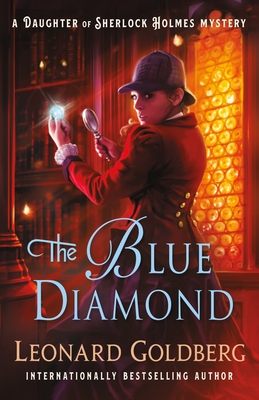 The Blue Diamond (The Daughter of Sherlock Holmes Mysteries #6) by
The Blue Diamond (The Daughter of Sherlock Holmes Mysteries #6) by 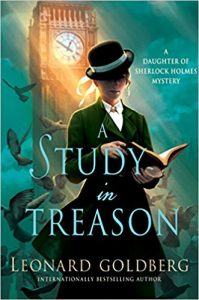 Escape Rating B: This series always gives me mixed feelings. Probably because at least within the confines of my own head, it is in dialogue with two other series (
Escape Rating B: This series always gives me mixed feelings. Probably because at least within the confines of my own head, it is in dialogue with two other series (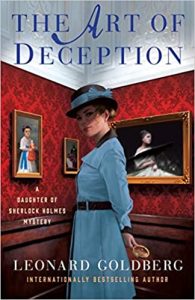 The case she has to solve here is every bit as contrived and convoluted as any that her father faced. But at least this one is hers, born out of the war the world is facing in her time and not his. This feels like a step forward for the series so I’m glad to see it.
The case she has to solve here is every bit as contrived and convoluted as any that her father faced. But at least this one is hers, born out of the war the world is facing in her time and not his. This feels like a step forward for the series so I’m glad to see it.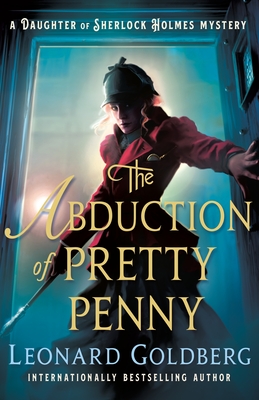 The Abduction of Pretty Penny (Daughter of Sherlock Holmes Mystery, #5) by
The Abduction of Pretty Penny (Daughter of Sherlock Holmes Mystery, #5) by 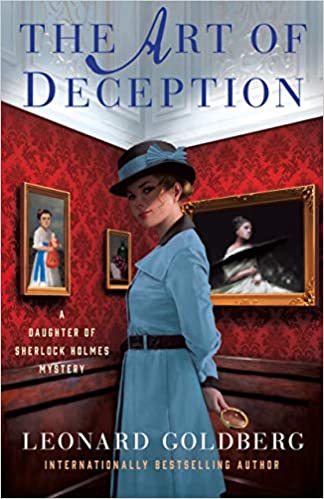 The Art of Deception (The Daughter of Sherlock Holmes Mysteries #4) by
The Art of Deception (The Daughter of Sherlock Holmes Mysteries #4) by 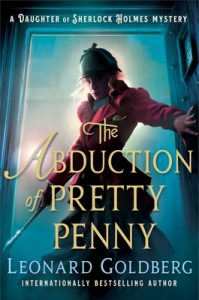 Part of the twist in the case is that it seems like the perpetrators are obvious fairly early on. Then they aren’t. And then they are again. There’s also a hidden criminal but that person’s participation in the crimes is even more obvious – not because they’ve done anything obviously wrong, but because they’re so obviously slimy. The bigger twist was the reason for the crimes. There is a lot of fascinating information – and even more contentious opinion – running through the whole story when it comes to Renaissance painting as well as the restoration and forgery of the same.
Part of the twist in the case is that it seems like the perpetrators are obvious fairly early on. Then they aren’t. And then they are again. There’s also a hidden criminal but that person’s participation in the crimes is even more obvious – not because they’ve done anything obviously wrong, but because they’re so obviously slimy. The bigger twist was the reason for the crimes. There is a lot of fascinating information – and even more contentious opinion – running through the whole story when it comes to Renaissance painting as well as the restoration and forgery of the same.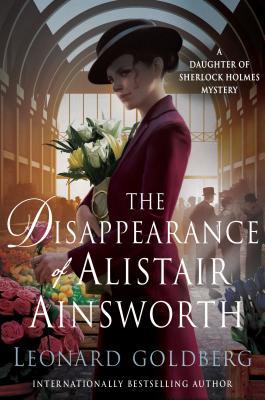 The Disappearance of Alistair Ainsworth (The Daughter of Sherlock Holmes Mysteries #3) by
The Disappearance of Alistair Ainsworth (The Daughter of Sherlock Holmes Mysteries #3) by 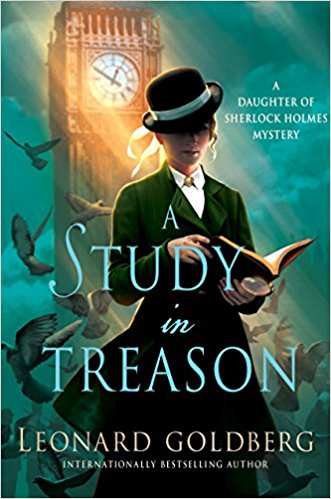 A Study in Treason (The Daughter of Sherlock Holmes Mystery #2) by
A Study in Treason (The Daughter of Sherlock Holmes Mystery #2) by 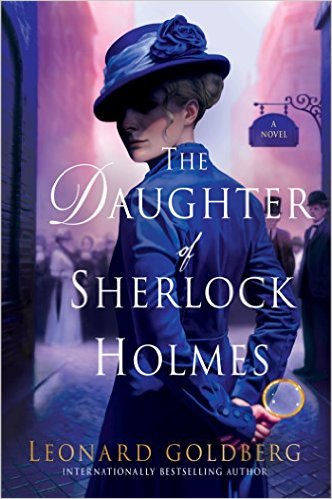 The Daughter of Sherlock Holmes by
The Daughter of Sherlock Holmes by